There are a lot of reasons you’d want to test your outlets. Does one of them not work? Do you want to know which outlets are on which circuits?
Portions of this article discuss wiring or working with electricity. Working on anything electrical comes with a lot of risk. Before doing any wiring or electrical work, you should consult with an electrician. Don’t take on any project you don’t feel comfortable with.
When you first move into a new home, testing your outlets is something that you should do fairly early on. Replacing a dead outlet is fairly easy. However, any larger problems like requires the attention of a skilled electrician.
When we test outlets, we’re testing to see:
- Does the outlet work?
- Is the outlet properly grounded?
- Who is on what circuit?
- Are they on GFCI if they need it?
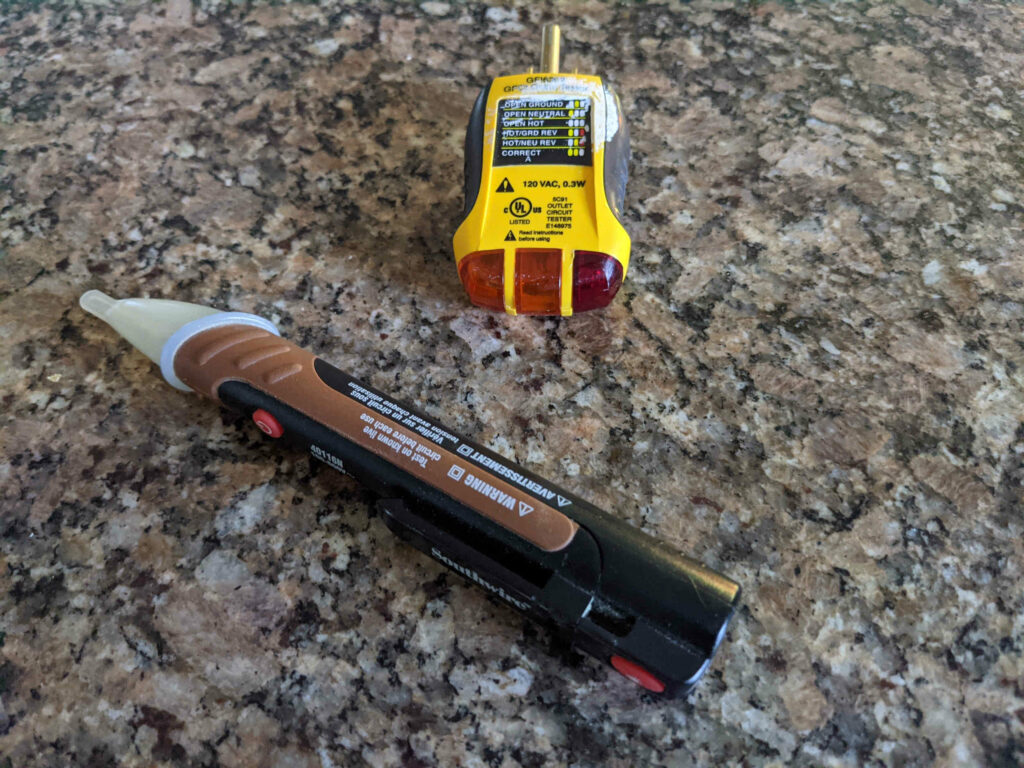
Equipment Needed
This isn’t a sponsored post, but I’m still recommending that you buy a few things.
- Receptacle Tester (Unsponsored Link)
- Non-Contact Voltage Tester (Unsponsored Link)
You’ll use these tools through the testing process.

Does the Outlet Work?
Before tinkering, we need to conduct a visual examination of each outlet we’re about to test. Is there any damage to the actual outlet or signs of burns? If there is, you’ll want to replace that outlet. It is fine if damage to just the faceplate. Those are cheap and easy to replace.
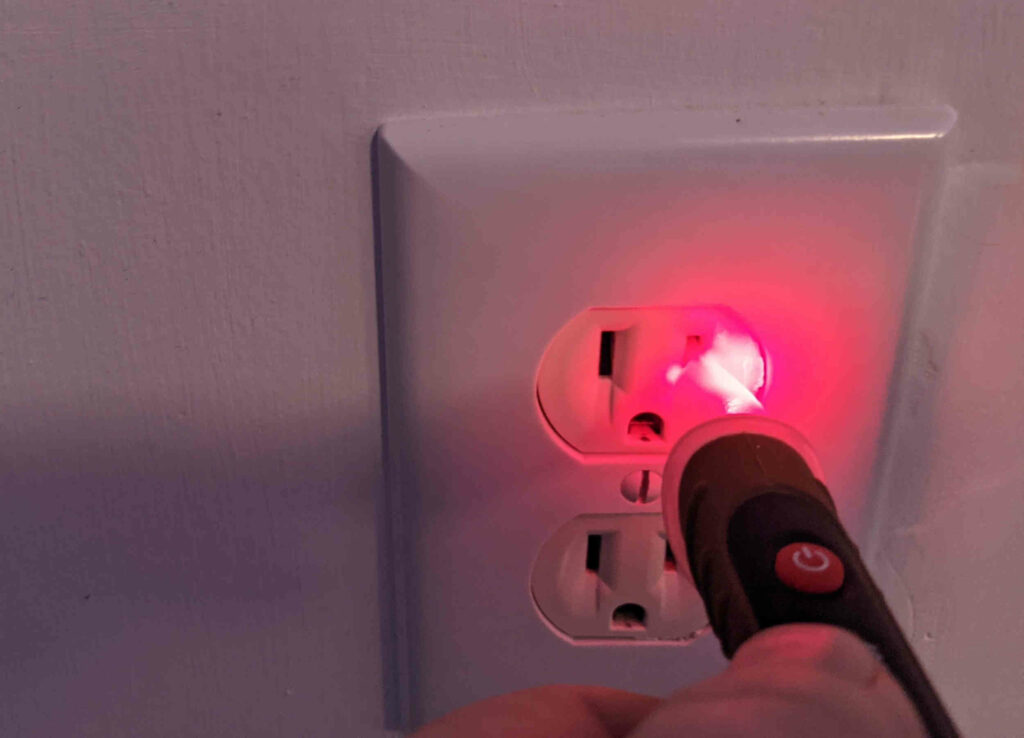
Next, if they pass visual inspection, it’s time we do a quick test with our volt tester. Turn it on and place the tip on or in the narrow side of the outlet. It should yell at you. That means the outlet is live. The first time you hear that noise, it should freak you out. They’re meant to get your attention. Therefore, they’re loud.
If the outlet isn’t live, that’s not necessarily a problem. Leave a sticky note on it that says “Not Live” and move on. If your house is like mine, you have a hundred outlets at least.
I like to take my outlets one room at a time. I go through each step in each room. That way I feel like I’m better able to cover all my steps with enough attention. However, some electrical problems cover multiple rooms. I’ve got a few of those.
Not Live Outlets
After you’ve marked your outlets live or not, it’s time to deal with outlets that aren’t live. If your room has a switch that doesn’t seem to go anywhere, try flipping that on. Then retest the outlets and see if any of them are live now. If any became live, those are your floor lamp outlets. Keep in mind that a top and bottom receptacle in an outlet can be on different circuits. Therefore, it’s important to test each receptacle separately.
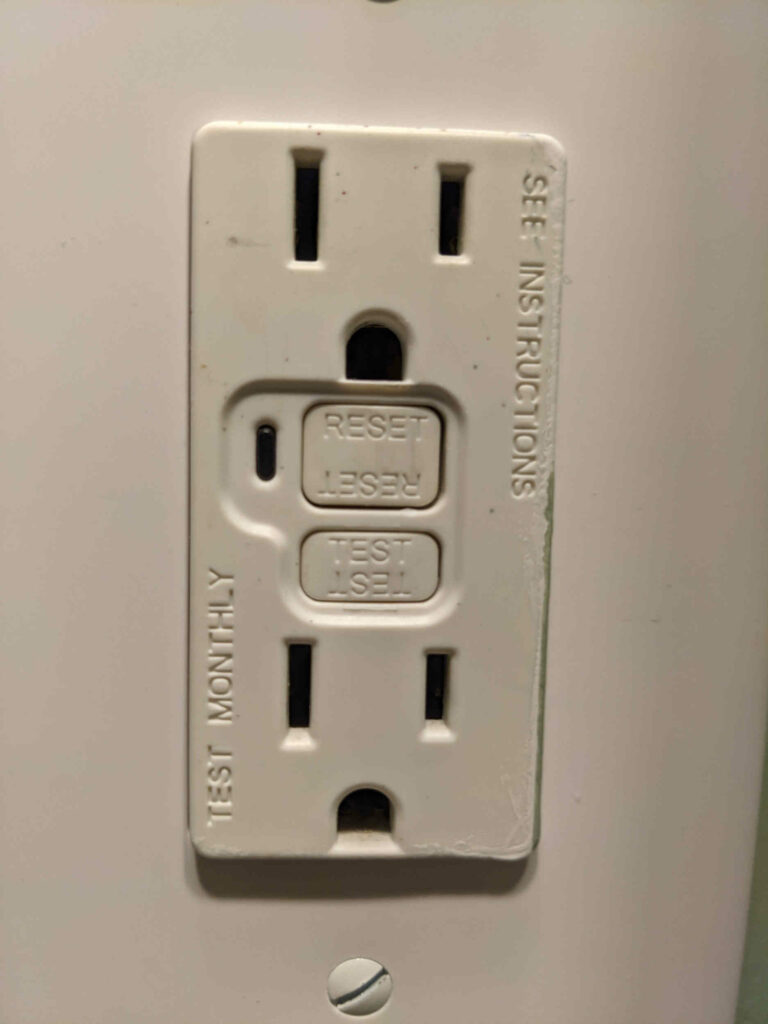
If you still have outlets that aren’t live, it is time to check for GFCIs. A GFCI outlet has two buttons in the middle that say “test” and “reset”. You’ll see these in kitchens, bathrooms, and outside mostly. These GFCI outlets act as a circuit breaker, but in the outlet itself. Any outlet that is attached to them can cause them to trip. Therefore, if any of your outlets are downline from one of them, it would not be live until you reset the GFCI. Check your nearby GFCIs and press the test and then the reset buttons on them. After that, go back and recheck your not live outlets to see if they’re working now.
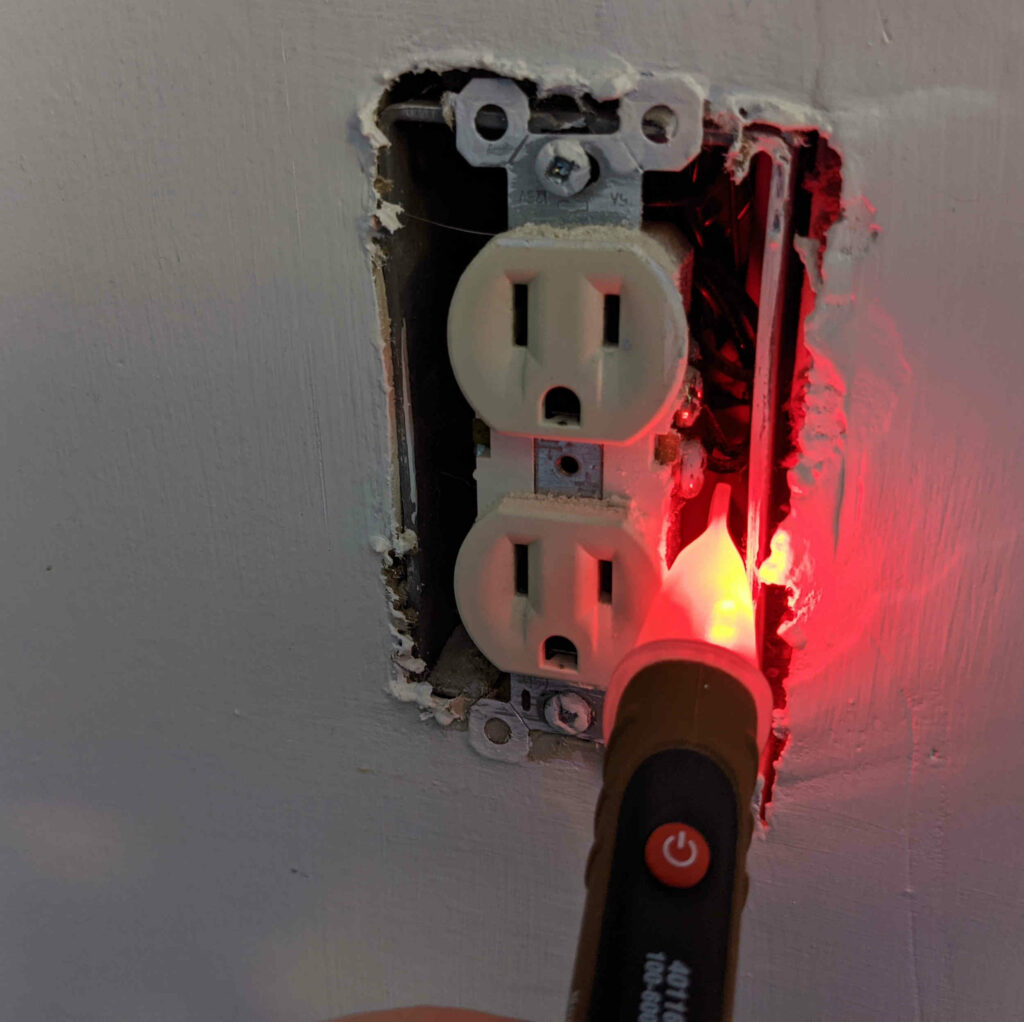
Fixing Wiring
If none of these things work, you might have a dead outlet or a loose connection. Because outlets are wired in lines, the loose connection may be in the upstream outlet or the dead outlet itself. You’re going to have to check both with your volt tester. To test these, remove the faceplate and hoover the volt tester over where the wire connects to the narrow slot side of the outlet. If there are two wires going in, test them both. Both should be live. If only one is, this outlet isn’t sending electricity to a downstream outlet.
I hope you’ve fixed the problem long before you’ve gotten to the point of rewiring things. If you do need to rewire anything, hire an electrician. Working with electricity is unsafe. An electrician will trace your circuits to find out if just that outlet that is dead, a wire is broken, there’s a loose connection, or some other issue.
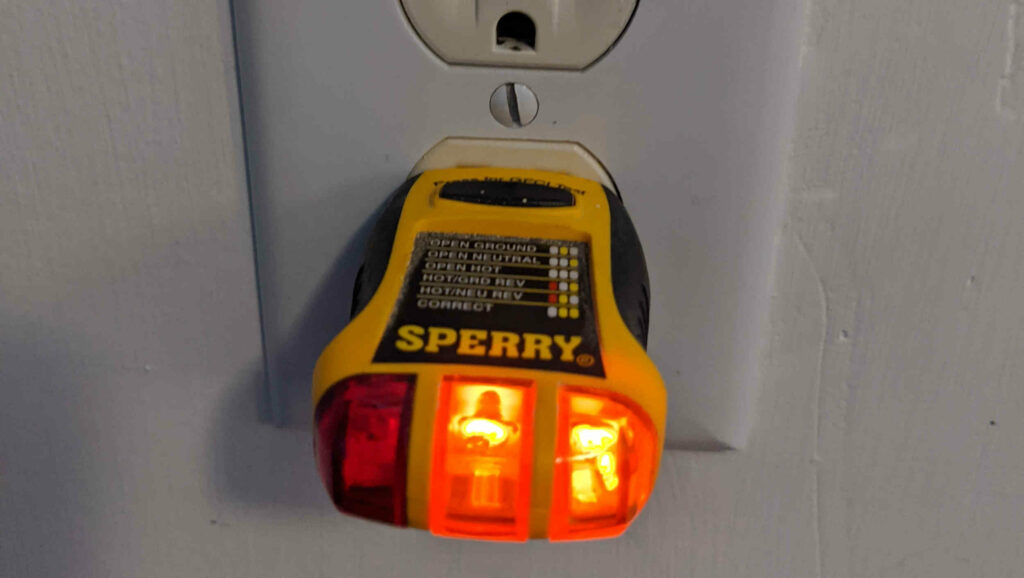
Is the Outlet Properly Grounded?
Next, we want to test to see if your outlets are grounded. To do this, we’re going to use the receptacle tester. It’s super easy to use. Just put it in the outlet you’re testing and see what lights turn on. Not all of them are the same, but hopefully you either have a guide or the directions are printed right on the tester. On mine, if the middle and right yellow lights are on, but the leftmost red light is not on, the outlet is grounded. It’s as easy as that! Do that for every outlet. A lot of older homes aren’t grounded. If you’re in that boat, you could always hire someone to add a ground. Otherwise, I’d recommend using good surge protectors on everything you want to protect.
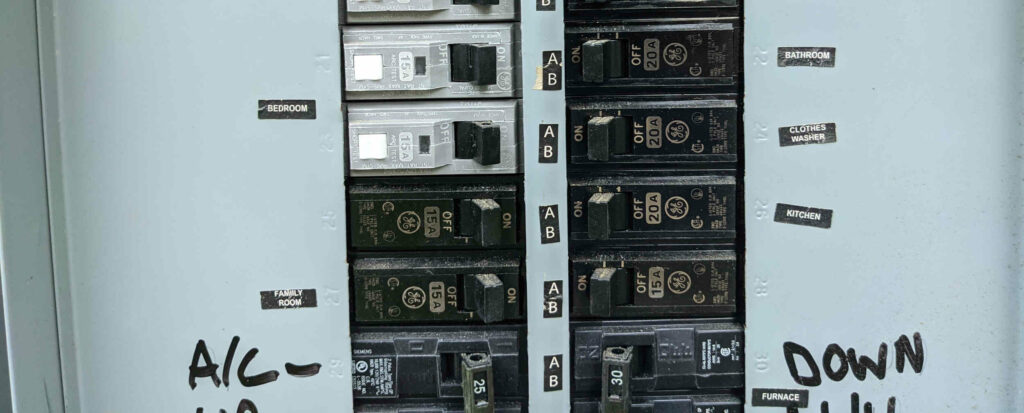
Who is on What Circuit?
Next, it’s time to figure out what your circuits are. If you’re lucky, the previous homeowner did a great job labeling their breaker box. If you’re like most people, you have a mess instead.
To play this game, you have to turn off your circuits. Then, go one circuit at a time and see what turns on. In my opinion, it is easiest to do this with a bunch of floor lamps plugged in or a bunch of receptacle testers. However, you do what works best for you! When I did this at my house, I was on the phone with my wife. I’d flip a circuit, and she’d test every outlet. It took a long time, but we figured out most of our circuits that way.
This part of the process took us the longest. The previous homeowners did a terrible job labeling our circuits and they did so in pencil. Even if they were labeled correctly, which they aren’t, half of the labels are impossible to read at this point. In addition to relabeling things on the breaker box, I also made a spreadsheet that we keep in our important household information folder. Therefore, we’ll always have access to that information one way or another.
Are They on GFCI if They Need it?
You really only need GFCI outlets if there’s a chance of water or other conductive materials getting in the outlet. Primarily you’re looking at the kitchen, bathrooms, the laundry room, and outdoors. If you have a workshop, you should use GFCI in there as well.
Fortunately, you only need one GFCI outlet per circuit. The first outlet in the circuit should be GFCI and rated for the maximum amperage that circuit can take. Normally, that’s 15 amp or 20 amp.
This is a fairly simple process.
Firstly, identify any outlets in your house you think should be GFCI that aren’t.
Secondly, test to see if those outlets are live to start.
Thirdly, trip nearby GCFI outlets and retest the other outlets to see if they’re still live.
If they’re no longer live, that outlet is on a GFCI circuit and is safe.
If they’re still live, you need to figure out which outlet is the first in that circuit and replace it with a GFCI. I recommend hiring an electrician if you can’t immediately figure out which outlet is first.
Not all GFCI outlets will be obvious. For example, my master bathroom is on the same circuit as our half bathroom that is halfway across the house. There’s only the one GFCI outlet in our half bath. However, that GFCI covers and protects the outlet in the master bathroom.
Test Your Outlets Conclusion
In conclusion, testing your outlets is important. However, it’s an all day affair. Are you prepared to tackle this project?
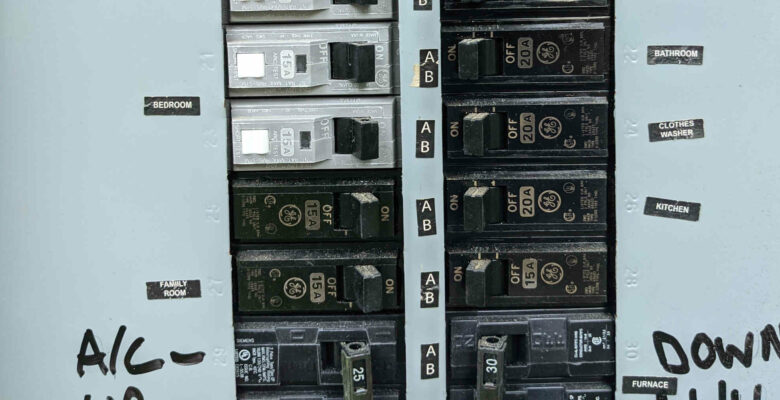




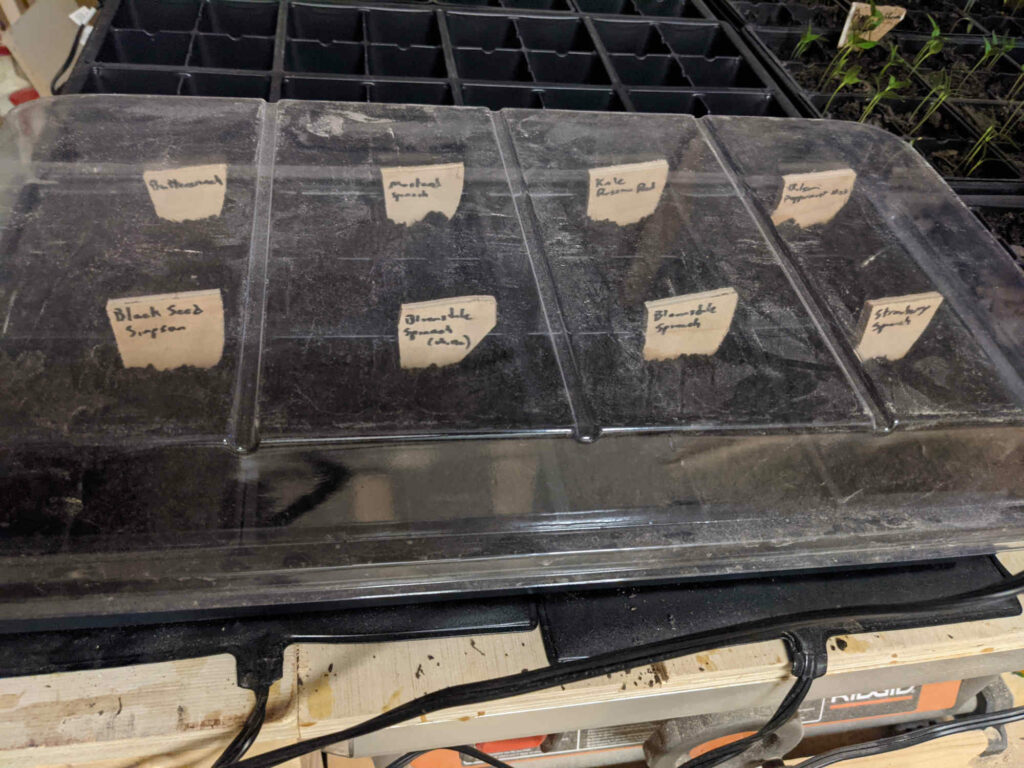

Leave a Reply